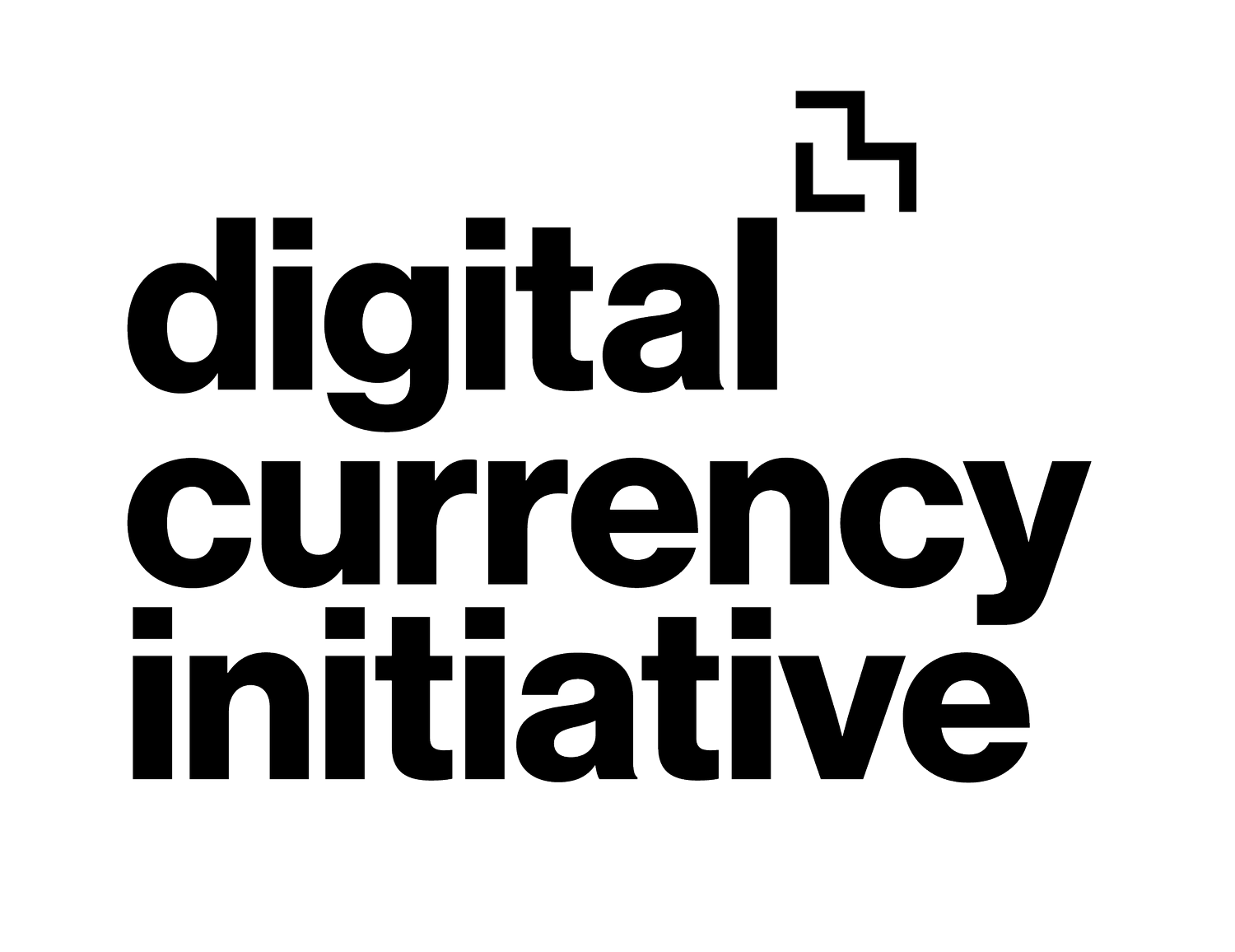
OMFIF: "CBDCs present new opportunities for handling disputes and fraud" by DCI Team Members
Potential designs may involve intermediaries in new and different ways
Central bank digital currencies potentially offer, in a digital form, the advantages of central bank money: settlement finality, liquidity and integrity. However, both offline and online commerce are susceptible to fraud and other kinds of disagreements. The existing techniques for managing fraud and disputes focus on giving users easy access to chargebacks, which relies on intermediaries to resolve disputes. Potential designs for CBDC may involve intermediaries in new and different ways, or may not use intermediaries at all, calling into question how to address fraud if CBDCs become widely used.

Axios Reception at Davos: Crypto’s Crossroads
On Tuesday, January 17th at the World Economic Forum in Davos, Switzerland, Axios markets reporter Courtenay Brown and MIT Media Lab Digital Currency Initiative director Neha Narula considered the most pressing issues facing cryptocurrency today including how (and if) the industry should be regulated, how governments and financial institutions should interact with the sector, and how investments could be safeguarded. The View from the Top sponsored segment featured Ripple chief executive officer Brad Garlinghouse.

CoinDesk names MIT one of the “Best Universities for Blockchain 2022”
A private research university established in 1861, the Massachusetts Institute of Technology (MIT) is one of the world’s most prestigious schools and ranked first in the QS World University Rankings in 2023 due to its academic and research excellence in multiple fields, including blockchain.

WBUR's Tales from the Crypto | Part I: Ukraine's NFTs and the 'Fyre Fest' of cryptocurrency
The Endless Thread team is excited to introduce a new mini-series: Tales from the Crypto, or three windows into the wild world of cryptocurrency. It's a landscape ripe for investors, gamblers, opportunists, and academic investigators — both online and offline. At every turn, our hosts and producers have turned to experts to make sense of this volatile, ever expanding terrain.
In the series' first installment, co-hosts Ben Brock Johnson and Amory Sivertson dive into a viral tweet about NFTs aiding Ukrainians with the war effort against Russia, as well as plans for a crypto island paradise that was never meant to be.

DCI Newsletter Issue #14 - September-December 2022
In this issue:
Join the DCI for a new research release on financial inclusion
Call for papers for the next issue of Cryptoeconomic Systems
DCI paper accepted at NSDI
And more!

DCI Newsletter Issue #13 - June-August 2022
In this issue:
Join the DCI at AFT'22
CBDC and financial inclusion research release date announced
Call for papers for the next issue of Cryptoeconomic Systems
A fond farewell to Tadge Dryja
And more!

The MIT Digital Currency Initiative bids farewell to Tadge Dryja
Five years ago, I was in the Boston area for a week and I hung out at the DCI.
It wasn't much of a space back then—really more like a closet. But there were ethernet ports in the walls, assorted cables, and computer accessories, and a couch with occasional undergrads hanging out, coding, or discussing the finer points of cryptocurrencies. It was welcoming, and a lot of fun. I brought a computer and started working, and talking to people about Bitcoin, and helping some students with their projects…

MIT Technology Review: “The MIT researcher who helps senators understand digital currencies“
Last summer, a special subcommittee of the US Senate met remotely to weigh the benefits of launching a central-bank digital currency, or CBDC—something that could, if optimally designed, transform the US financial system, making it more accessible to more citizens. For senators staring intently at their laptops, this was basically the first day of digital-currency school. And to introduce them to this highly technical world, the first witness that Senator Elizabeth Warren called was MIT Digital Currency Initiative director Neha Narula.

DCI Newsletter Issue #12 - January-May 2022
In this issue:
Volume 2, Issue 1 of Cryptoeconomic Systems out now.
OpenCBDC announces new collaborations and newly-opensourced projects.
User research projects in the US and globally.
The DCI team expands.
And more!

MIT Digital Currency Initiative (DCI) announces research collaboration with the Bank of England on central bank digital currency
The Bank of England announced an agreement to collaborate on a twelve-month Central Bank Digital Currency (CBDC) research project with MIT Digital Currency Initiative. The agreement supports and builds on DCI’s ongoing research into CBDC, while also contributing to the Bank of England’s wider research and exploration of central bank digital currencies. While no decision has been made on whether or not to introduce a CBDC in the UK, the work will investigate and experiment with potential CBDC technology designs and approaches, and evaluate key tradeoffs, opportunities, and risks. This type of research can help inform wider policy development by contributing important technical ideas and questions.

MIT Digital Currency Initiative (DCI) announces research collaboration with the Bank of Canada on central bank digital currency
Today, the Bank of Canada announced an agreement to collaborate on a twelve-month CBDC research project with the MIT Digital Currency Initiative. The agreement supports and builds on the DCI’s ongoing research into CBDC, while also contributing to the Bank of Canada’s wider research agenda into digital currencies and fintech. The work will investigate and experiment with potential CBDC technology designs and approaches, and evaluate key tradeoffs, opportunities, and risks. While no decision has been made on whether or not to introduce a CBDC in Canada, this type of research can help inform wider policy development by contributing important technical ideas and questions.

DCI Newsletter Issue #11 - Q4 2021+
In this issue:
The release of Project Hamilton, a collaboration between the Federal Reserve Bank of Boston and the DCI
Taproot activation, and recognition for AJ Towns as one of the most influential developers of 2021
The DCI is hiring a software engineer
The next issue of Cyptoeconomic Systems
MIT Bitcoin Club’s upcoming hackathon at Bitcoin EXPO (May 6-8)

DCI Newsletter Special Issue - Project Hamilton (FRBB<>MIT DCI)
Today, the MIT Digital Currency Initiative is releasing the phase one outputs of Project Hamilton, our multi-year research collaboration with the Federal Reserve Bank of Boston. Our release includes a technical paper, “A High Performance Payment Processing System Designed for Central Bank Digital Currencies,” and an open source codebase, OpenCBDC.
You can read more about the release in MIT News here.

MIT News "MIT experts test technical research for a hypothetical central bank digital currency"
Collaboration with Federal Reserve Bank of Boston yields progress in understanding how a digital currency might be developed in the future.
CAMBRIDGE, Mass. -- In collaboration with a team at the Federal Reserve Bank of Boston, MIT experts have begun designing and testing technical research through which further examination of a Central Bank Digital Currency (CBDC) can be performed in the U.S.
The effort, known as Project Hamilton, is in an exploratory phase, and the research is not intended as a pilot or for public deployment. Instead, the researchers have explored two different approaches that could be used to process transactions, and thus could indicate the technical feasibility of a potential CBDC model. In a process involving significant design flexibility, the MIT group tested factors such as the volume and speed of transactions, and the resilience of the systems in general, among other requirements for a viable digital currency.

AJ Towns listed as one of the "Most Influential 2021: The Developers Who Wrote Bitcoin’s Taproot Upgrade"
Nick along with A.J. Towns, Tim Ruffing and Pieter Wuille are the authors credited for writing the three BIPs that made up Taproot, the most significant Bitcoin upgrade in four years.

"Why Central Bank Digital Currencies?" in Federal Reserve Bank of New York's Liberty Street Economics
DCI Director Neha Narula co-authored the piece, "Why Central Bank Digital Currencies?" published in the Federal Reserve Bank of New York's Liberty Street Economics
“In the past year, a number of central banks have stepped up work on central bank digital currencies (CBDCs – see map). For central banks, are CBDCs just a defensive reaction to private-sector innovations in money, or are they an opportunity for the monetary system? In this post, we consider several long-standing goals of central banks in their support and provision of retail payments, why and how central banks tackle these issues, and where CBDCs fit into the array of potential solutions.”

DCI Newsletter Issue #10 - Q1,2,&3 2021
In this issue:
Announcing the new Bitcoin Security Initiative Lead!
New Issues of Cryptoeconomic Systems
View the 2021 MIT Bitcoin Expo presentations by the DCI
Blockchain Labs 2021 final reports
Join DCI and Maiden for the release of our first user-research report: Dec 2nd
Learn more about our open roles: Administrative Assistant and more
Joining MIT DCI to lead our Bitcoin Software and Security Effort
We’re excited to share that AJ Towns is joining the Digital Currency Initiative to lead our Bitcoin Software and Security Effort (please find his announcement below). This four-year research and development program is designed to continue to harden the Bitcoin network and steward the industry’s commitment to funding open source software. The effort will include contributing to Bitcoin Core development as well as longer-term research, such as investigations into the stability of rewards and software to provide strong robustness and correctness guarantees. It will also include attracting talent in network and operating system security, compilers, programming languages, testing, and more to join the effort.

CNBC's Dain Evans interviews Neha Narula for "China’s digital yuan could pose challenges to the U.S. dollar"
China is beating the U.S. when it comes to innovation in online money, posing challenges to the U.S. dollar’s status as the de facto monetary reserve. Nearly 80 countries — including China and the U.S. — are in the process of developing a CBDC, or Central Bank Digital Currency. It’s a form of money that’s regulated but exists entirely online. China has already launched its digital yuan to more than a million Chinese citizens, while the U.S. is still largely focused on research.
The two groups tasked with this research in the U.S., MIT’s Digital Currency Initiative and the Federal Reserve Bank of Boston, are parsing out what a digital currency might look like for Americans. Privacy is a major concern, so researchers and analysts are observing China’s digital yuan rollout.

"The Fed’s digital dollar could bring millions into the digital economy" by Quartz
Neha discussed her Subcommittee Hearing: Building A Stronger Financial System: Opportunities of a Central Bank Digital Currency on June 9th and DCI’s current collaborative CBDC project with the Federal Reserve Bank of Boston, with Scott Nover of Quartz.
